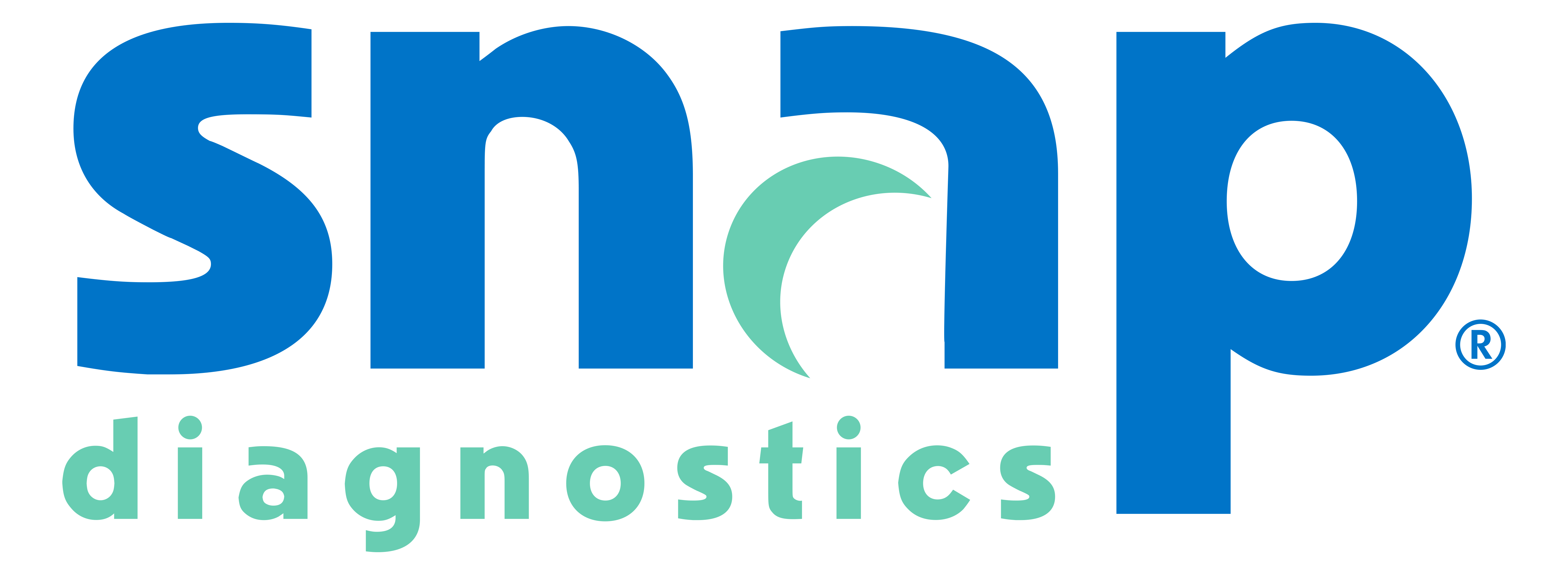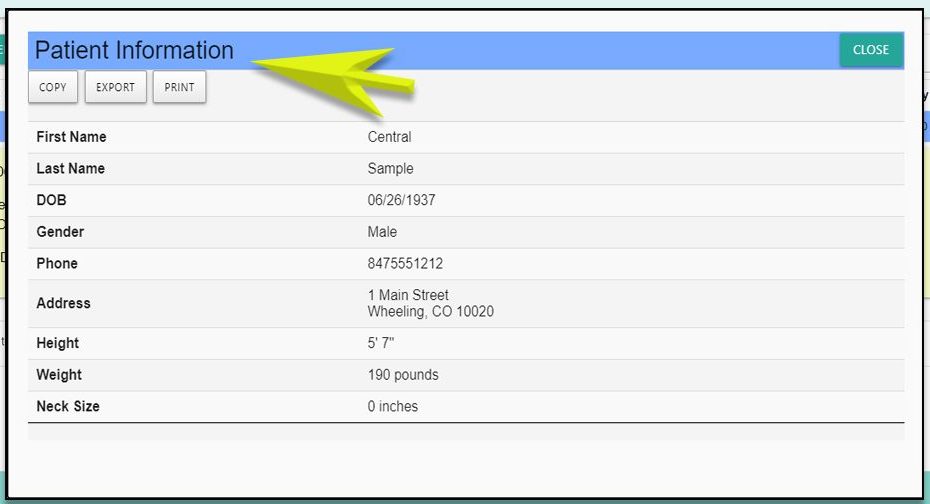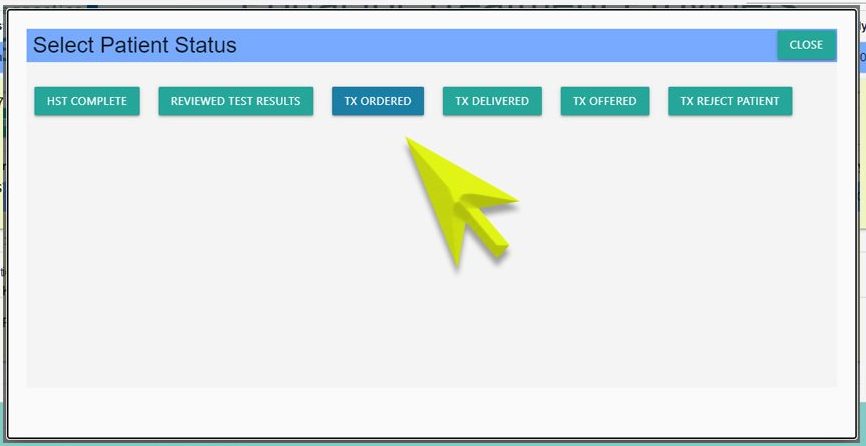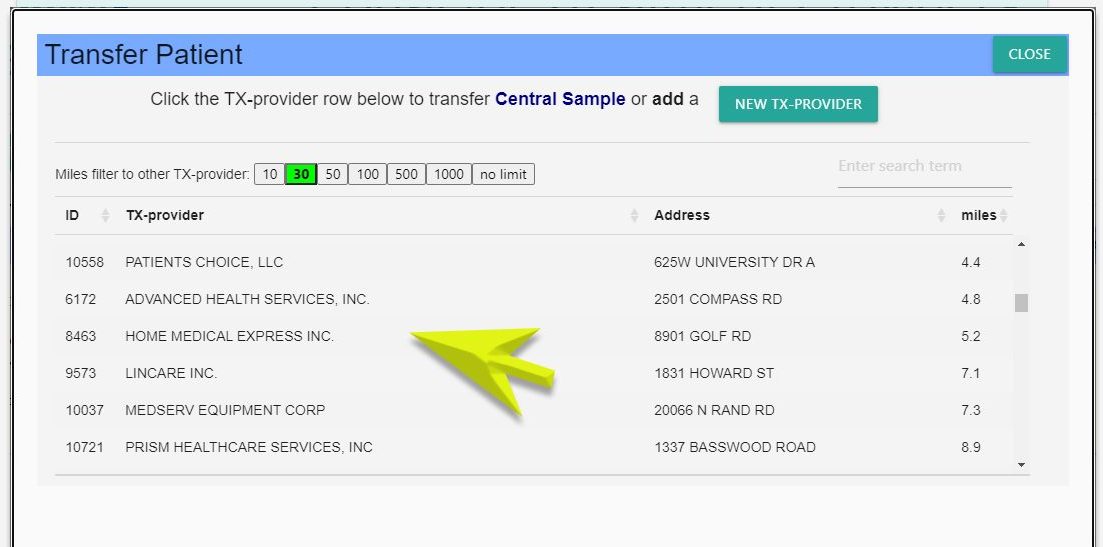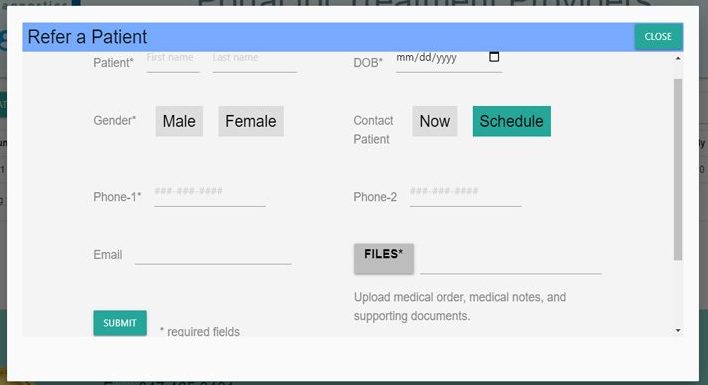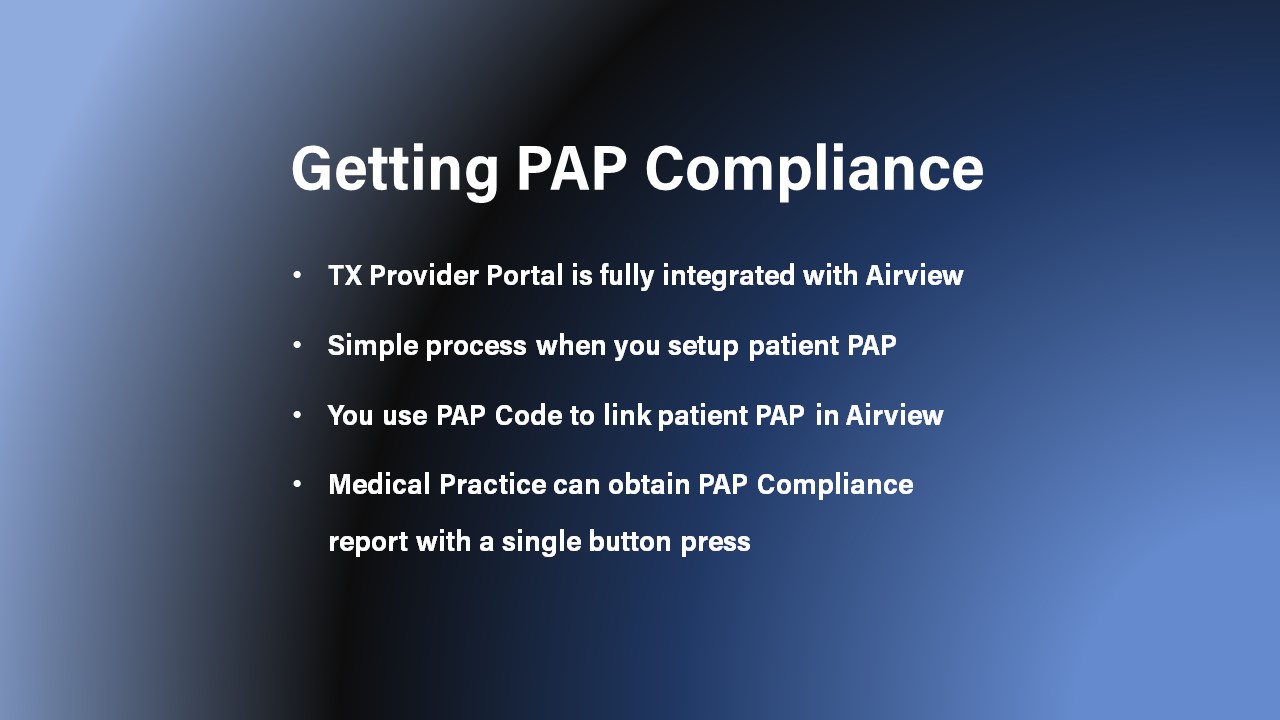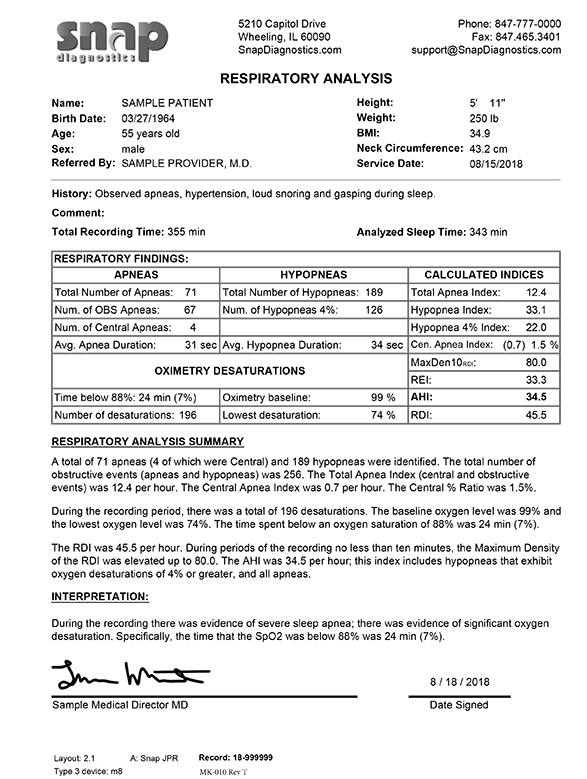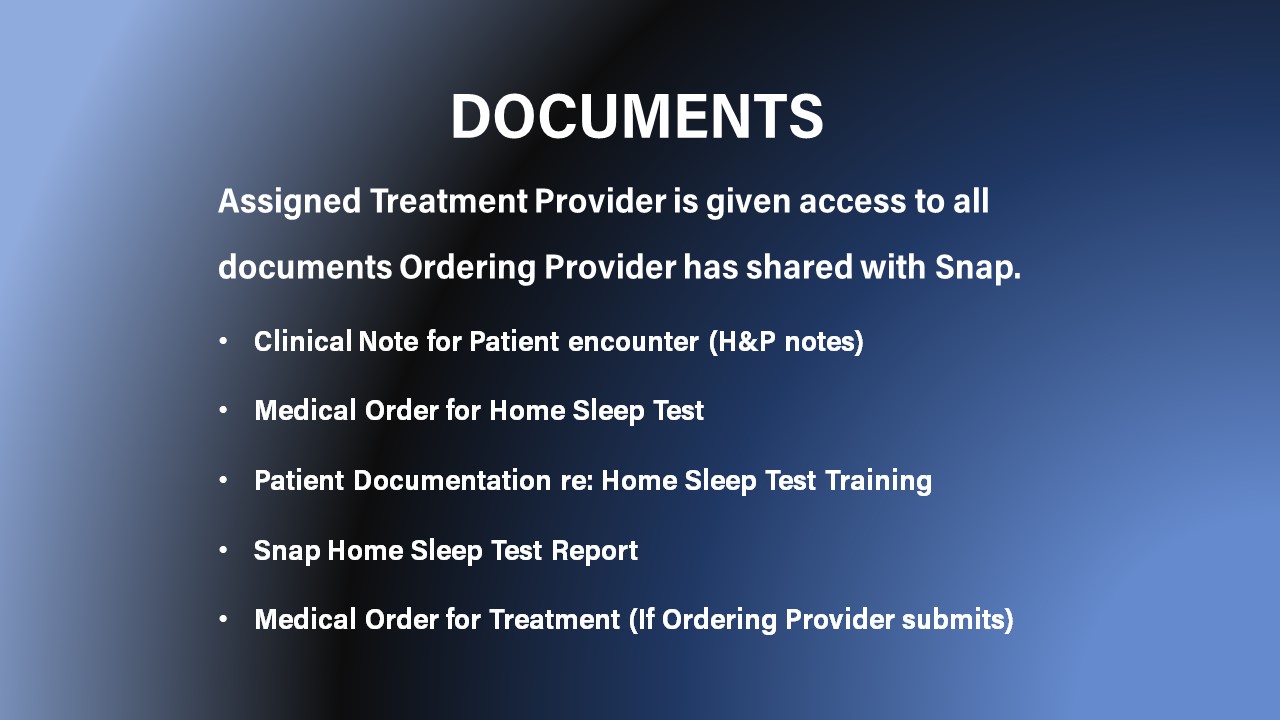Treatment
Sleep apnea is treatable. Available treatments include positive airway pressure therapies, which are the most common and most effective, as well as oral appliances, surgery, and lifestyle modifications. There isn’t a one-size-fits-all solution to managing sleep apnea. You should consult with your physician to determine which treatment options are right for you.
Positive Airway Pressure Therapy
Positive airway pressure (PAP) therapy is the most common and effective treatment for sleep apnea. PAP devices provide gentle air pressure through the nasal passage during the night. This pressure helps to ensure that the airway remains open so that you can breathe naturally and get a good night’s sleep.
Your provider may select from several types of PAP devices based on your needs. For example,
Continuous Positive Airway Pressure (CPAP) devices provide continuous airway pressure throughout the night.
Autotitrating positive airway pressure (APAP) devices automatically adjust the level of air pressure as needed during the night. The APAP treatment automatically resets to the proper level each night if you gain weight, lose weight, suffer from a cold or nasal allergy, or when you change sleeping position.
Bilevel positive airway pressure (BPAP) devices alternate between levels of pressure. When you breathe in air, the pressure rises. As you breathe out, the pressure decreases. If you have a problem with CPAP or APAP, your sleep doctor may recommend BPAP. Your doctor also may recommend using BPAP if you have sleep apnea along with another breathing disorder.
Oral Appliance (OA) Therapy
For patients with mild to moderate obstructive sleep apnea, dental appliances or oral mandibular advancement devices can be fit by dentists who are trained in dental sleep medicine. These devices are custom fit to prevent the tongue from blocking the throat and/or to advance the lower jaw forward to help keep the airway open during sleep.
Surgical Procedures
Soft palate procedures are the most common type of surgery for mild to moderate sleep apnea, and may be used in conjunction with other therapeutic approaches for moderate to severe sleep apnea. Soft palate procedures involve stiffening, removing or repositioning excess tissue in the back of the roof of the mouth to widen the airway. Other surgical options include opening the nasal passage to improve the flow of air, opening up space for breathing behind the tongue, or enlarging the space for breathing in the lower part of the throat. In addition, for patients with severe apnea, surgically implanted nerve stimulation devices are available. These devices work by activating the hypoglossal nerve to tighten the muscles of the tongue and upper airway during sleep, improving airflow and reducing sleep apnea.
In cases where obesity contributes to sleep apnea, weight loss surgery may also be an option.
Lifestyle and Behavioral Modification
Your provider may recommend home remedies together with other medical therapies. Common approaches include weight loss programs, positional therapy and day-to-day lifestyle modifications.
Weight Loss Programs: In cases where excess weight contributes to sleep apnea, weight loss can help improve sleep apnea by reducing extra tissue in the throat.
Positional Therapy: Sleeping on your back can cause the tongue and soft palate to rest against the back of your throat, narrowing your airway (that is why people are more likely to snore when sleeping on their backs). For individuals with sleep apnea, sleeping on the back can make apnea worse, while breathing can improve when sleeping on the side or abdomen. Positional therapy consists of methods that prevent you from rolling onto your back during sleep. Positional strategies may include wearing a special commercial device around your waist or back that alerts your body to change positions, or a home-made solution such as attaching a tennis ball to the back of your pajama top.
Lifestyle modifications: There are a variety of lifestyle modifications that can help reduce snoring and improve your sleep apnea symptoms. For example, avoiding cigarettes and being mindful of your medication and alcohol intake can have a substantial positive effect.
-
- Smoking increases the risk and severity of obstructive sleep apnea for many reasons. Studies show that smoking interferes with your body’s natural sleep cycle, causes inflammation and congestion in the nose and upper airway, and weakens upper airway muscles.
- Alcohol, as well as certain sedatives and pain medications, can contribute to sleep apnea by relaxing the airway muscles, or by depressing the central nervous system.
Note: Snap Diagnostics does not provide treatment for sleep apnea, only testing. Based upon the results of your sleep test, as well as your medical history, your medical provider will work with you to select a course of treatment that meets your needs.
